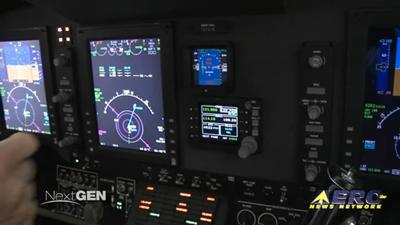Wed, Feb 22, 2017
Focuses On Adherence To Proper Test Procedures
The FAA has released a Safety Alert for Operators (SAFO) directed towards personnel involved with ground testing of aircraft Air Traffic Control (ATC) transponders and ADS-B OUT equipment. The SAFO points out the importance of adhering to proper test procedures and the hazards associated with improper testing.

The FAA has received reports of transponder and ADS-B OUT system ground test events in which information, including simulated altitude, was transmitted from the test aircraft and received by aircraft inflight. In at least one instance, an ADS-B OUT system ground test created a false airborne target that generated a Traffic Alert and Collision Avoidance System II (TCAS II) Resolution Advisory (RA) on a Boeing 737 aircraft on approach. Pilot reaction to this RA required unnecessary maneuvering in congested airspace and initiated ATC re-sequencing actions that affected multiple aircraft and negatively impacted operations in the area for about 30 minutes.
Transponders and ADS-B OUT systems operating under test conditions transmit specific information about the aircraft, including position and altitude data. These tests frequently involve a check of the aircraft’s altimetry system in which air pressure is induced into the pitot static system to simulate operation at various altitudes. In cases where transmission lines are not attached directly to test equipment, antenna shielding must be used to prevent propagation of test signals with potential to interfere with ATC operations or TCAS-equipped aircraft operating in the area.
The FAA recommends that repair stations and maintenance personnel performing transponder and ADS-B OUT system testing evaluate the adequacy of their procedures and adhere to proper test procedures to prevent uninhibited system transmission that may affect ATC operations or airborne aircraft. The FAA also recommends that applicable maintenance personnel be aware of any local requirements to alert ATC of impending testing, and to review relevant guidance contained in the latest revisions of:
AC 29-151, Airworthiness Approval of Traffic Alert and Collision Avoidance Systems (TCAS II), Versions 7.0 and 7.1 and Associated Mode S Transponders;
AC 43.6, Altitude Reporting Equipment and Transponder System Maintenance and Inspection Practices; and
AC 20-165, Airworthiness Approval of Automatic Dependent Surveillance - Broadcast OUT Systems.
(Source: FAA)
More News
He Attempted To Restart The Engine Three Times. On The Third Restart Attempt, He Noticed That Flames Were Coming Out From The Right Wing Near The Fuel Cap Analysis: The pilot repor>[...]
Make Sure You NEVER Miss A New Story From Aero-News Network Do you ever feel like you never see posts from a certain person or page on Facebook or Instagram? Here’s how you c>[...]
From 2009 (YouTube Edition): Leading Air Show Performers Give Their Best Advice for Newcomers On December 6th through December 9th, the Paris Las Vegas Hotel hosted over 1,500 air >[...]
Aero Linx: NASA ASRS ASRS captures confidential reports, analyzes the resulting aviation safety data, and disseminates vital information to the aviation community. The ASRS is an i>[...]
“For our inaugural Pylon Racing Seminar in Roswell, we were thrilled to certify 60 pilots across our six closed-course pylon race classes. Not only did this year’s PRS >[...]
 NTSB Final Report: Rutan Long-EZ
NTSB Final Report: Rutan Long-EZ ANN FAQ: Turn On Post Notifications
ANN FAQ: Turn On Post Notifications Classic Aero-TV: ICAS Perspectives - Advice for New Air Show Performers
Classic Aero-TV: ICAS Perspectives - Advice for New Air Show Performers ANN's Daily Aero-Linx (06.28.25)
ANN's Daily Aero-Linx (06.28.25) Aero-News: Quote of the Day (06.28.25)
Aero-News: Quote of the Day (06.28.25)



